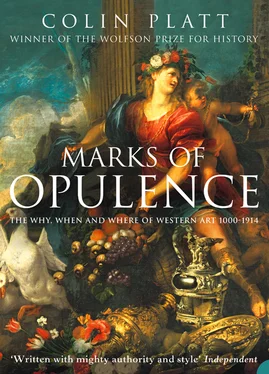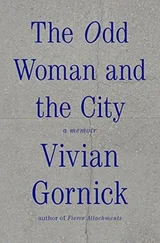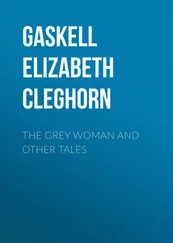‘I thank God and ever shall’, wrote John Barton (d.1491) of Holme, merchant of the Staple of Calais, ‘’tis the sheepe hath payed for all.’ And for a rich man like himself, obtaining credit held few terrors even in the worst of times, nor would he have been excluded, as lesser men might be, from those complex barter arrangements – exchanging wool for alum, cloth for wine or iron – which were all that the mid-century currency shortages allowed. By making the rich still richer, the post-plague bullion famine thus added another element to the already serious distortion of family inheritance histories created by exceptionally high mortalities and low birth-rates. If the generations are too compressed and wealth cascades too rapidly, and if a failure to reproduce, or the sudden death of heirs, brings unanticipated enrichment to distant kin, high levels of consumerism may result. In late-medieval Europe, such extraordinary windfall riches – a major factor, even then, in the funding of the arts – bore no more relation to the real health of the economy than the inflated lottery takings of today.
In those circumstances exactly, it was the deaths in quick succession of no fewer than six better-qualified heirs that catapulted John Hopton on 7 February 1430 into the spreading estates which enabled him to take a leading role in the rebuilding of his parish church at Blythburgh. 17 And it was other swiftly acquired fortunes which made great church-rebuilders also of John Barton of Holme, of John Tame of Fairford, of John Baret of Bury, of Thomas Spring of Lavenham, and of the Cloptons (John especially) of Long Melford. These small-town English clothiers, protected from competition by the Low Countries slump, could expect to sell everything they produced. Nothing could prevent them getting richer. However, even in those Flemish cities which lost out most to English exports, there had been opportunities enough under Burgundian rule for the accumulation of considerable private fortunes. Mid-century Ghent – its looms fallen silent and its weavers out of work – was among the more prominent casualties of the recession. Yet just two decades earlier, a wealthy Ghent couple had nevertheless found the means to commission a high-quality painted altarpiece from the best artists of the day, pensioners of Philip the Good. Hubert and Jan van Eyck’s luminous polyptych, the Adoration of the Lamb (1432), was painted for the personal chantry at St John’s (now Ghent Cathedral) of Joos Vijd and Elizabeth Borluut. It was a ‘stupendous’ painting: huge and vastly detailed. 18 And of course it was enormously expensive.
Other big commercial fortunes in the post-plague North included those of William Canynges, shipowning philanthropist of Bristol, and Jacques Coeur, merchant-financier of Bourges. Each would support an ambitious building programme – a cathedral-like preaching nave for St Mary Redcliffe (Bristol); a fabulous townhouse in Bourges – in which there is not the slightest evidence of economy. Likewise vast preaching naves, spectacular prodigy gatehouses, and big town halls characterized the more successful of the late-medieval German towns where, for example, by the early 1500s the taxable worth of some thirty-seven burghers of Nuremberg and fifty-three of Augsburg – each assessed at more than 10,000 Rhenish florins – would have ranked them among the top 1 per cent of Florentine taxpayers a century earlier. 19 Meanwhile in Florence itself the number and scale of individual private fortunes continued growing. And it was the steadily increasing disposable wealth of Florence’s better-off citizenry which underpinned its continuing eminence in the arts.
By far the richest man in Florence in 1427 (the year of the great catasto or tax assessment) was Palla Strozzi. However, Palla’s son, Gianfrancesco, was to be among those brought down in the major banking debacle of 1464. And if even the greatest Florentine fortunes were thus so vulnerable to collapse, long-term investment in the arts in general – and in large-scale palace-building in particular – might have seemed in normal circumstances unlikely. In practice, the opposite was the case. New fortunes, unlike old, invite display; and Florence was awash with new money. By the 1490s another Strozzi, Filippo, had grown individually so rich that he was worth more than twice as much in real terms as the great Palla. It was Filippo who began building the huge Strozzi Palace, far exceeding his own family’s needs, which he then left unfinished on his death. Furthermore, Filippo and his contemporaries, as well as being distinctly richer than their early fifteenth-century counterparts, belonged also to a much larger group. There had been nobody in Florence in 1427 to equal Palla Strozzi. Just a century later, there were no fewer than eighty Florentine citizens at least as rich as Palla, of whom eight enjoyed fortunes twice as large. 20
For many of these, public patronage of the arts was acceptably part of the price of Florentine citizenship. Pride in their city was motivation enough. However, a more general occasion for investment in the arts was provided by after-death soul-care. Palla Strozzi’s many works of public piety, for which he expected (and received) recognition, included the commissioning in 1423 of Gentile da Fabriano’s splendid and hugely popular Adoration of the Magi altarpiece for the fashionable church of Sta Trinità. Likewise big donor figures feature prominently in the foreground of Masaccio’s almost contemporary Holy Trinity (1425–7) at Sta Maria Novella, where Domenico Lenzi and his wife kneel in adoration of the Crucified Christ, of God the Father, the Virgin Mary and St John. It was of this highly original work, admired more by other painters than by the art-loving public of the day, that Vasari later wrote: ‘the most beautiful thing, apart from the figures, is the barrel-vaulted ceiling drawn in perspective and divided into square compartments containing rosettes foreshortened and made to recede so skilfully that the surface looks as if it is indented’. 21 And it is true that neither Masaccio’s mastery of perspective nor his intuitive understanding of classical architecture had any parallel in Florentine painting of his time. Yet there is a more traditional moral message in Masaccio’s Trinity. Below his two donor figures is a skeleton on a sarcophagus, painted with as much care as the rest of the fresco and accompanied by the ancient warning legend: ‘Io fuga quelche voi sete … I was once what ye are now; and what I am now, so shall ye be.’
Almost identical memento mori texts occur on twelfth-century tomb-slabs. They are used again on pre-plague morality paintings of The Three Living and the Three Dead , where the Dead confront the Living at a crossroads, and have no necessary association with the pestilence. In contrast, the cadaver-bearing ‘transi’ tomb – always more common north of the Alps than in Mediterranean lands such as Italy – gained broad acceptance as a funerary convention only in the fifteenth century, when at least some of the cadaver’s realism and much of its immediate impact were unquestionably owed to the everyday experience of the dying and the dead shared by sculptor and public alike. Even so, it was less contemporaries’ morbid preoccupation with sudden death which inspired the style than their abiding dread of the punishments of Purgatory. At the turn of the century when the transi tomb began – most influentially with the cadaver effigy of Cardinal Jean de Lagrange (d.1402) at Avignon – the naked and corrupt figure of a great prince of the Church served chiefly to demonstrate humility: ‘Miserable one [runs the cardinal’s inscription], why are you so proud? You are only ash, and you will revert, as we have done, to a fetid cadaver, food and titbits for worms and ashes.’ However, as the style spread to laymen, other purposes were added: to attract attention, to awaken pity, and to elicit prayer. 22 At John Barton’s rebuilt church at Holme by Newark, there is the customary inscription in the big east window over the altar, calling on the devout to ‘pray for the soul of John Barton … builder of this church, who died 1491’. Identical orate pro anima (pray for the soul of … ) texts are repeated all over Europe in similar contexts. Yet on Barton’s canopied monument – paired effigies above, single cadaver below – the appeal is both more personal and more affecting: ‘Pity me, you at least my friends, for the hand of the Lord has touched me.’
Читать дальше












